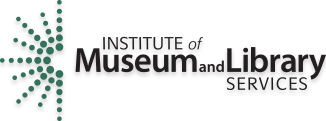It can be difficult and time consuming to figure out what different archives in Alaska have on a particular subject. Alaskan archives all have different tools for finding their collections, ranging from searchable catalogs to lists on their websites, and having to navigate these different search mechanisms can be a barrier to access for some researchers. Archivists or librarians at one institution do not necessarily know what collections another institution has, so they might not be able to point researchers to helpful collections outside their own institution. A new, grant-funded project seeks to make finding collections housed at different institutions easier for researchers, librarians, and archivists.
Last year, we partnered with the Alaska Library Network to get a grant to create a series of multi-institution topic guides, which bring together links to descriptions of primary source collections on selected topic topics held at archives, libraries, and museums across Alaska. The project was funded by the Institute of Museum and Library Services, through the Alaska State Library’s Interlibrary Cooperation Grant program. With the funding we received, we were able to create 12 guides on frequently researched topics, all of which are available on Alaska’s Statewide Library Electronic Doorway (SLED).

Guides
After several months of work, we produced guides on the following topics:
- Anthropology and archaeology in Alaska primary sources
- Alaska Highway construction
- Alaska Native organizations
- Alaskan legislators’ papers
- Fishing, fisheries, and canneries primary sources
- Military in Alaska
- Mining in Alaska
- Mountaineering in Alaska
- Performing arts
- Petroleum and natural gas related collections
- Railroads in Alaska
- Whaling
The guides are not completely comprehensive. For example, if a collection only had one document relating to a topic, we did not include it. We would still encourage researchers to search the institutions’ websites, especially if they are looking for a specific document.
The process
We initially identified 20 topics for which we wanted to create guides. The topics were selected based on our observations about what our researchers were looking for, as well as our conversations with other archivists in the state. We came up with estimates for how long each guide would take, based on how many relevant collections we expected to find and how challenging we thought they would be to find. We then prioritized the topics based on anticipated demand, knowing that we would probably not be able to create guides for all of the topics we had identified. Because our time estimates were mostly guesses, we decided to start by dividing up out six highest priority guides so that Arlene, Veronica, and I each had two guides to work on.
For each guide we took a look at the various repositories’ websites and searched for collections using the different search terms we could think of. We then emailed the institutions the lists of collections we found on their websites and contacted institutions that did not list their collections online. If the archives we contacted had anything to add to the list or wanted us to remove collections that they didn’t feel were relevant, we made the changes they requested.
Once the first guide (Military in Alaska, in case you were wondering) was finished, we began adding the guides to the SLED site. Both SLED and our own topic guides are built using LibGuides, and we thought it would work exactly the same. It turns out that the State Library, which maintains SLED, has some additional rules about accessibility (which we should probably also follow) and uses a different method for adding links than we do. After a brief adjustment period, adding the guides to the site went quickly. We overestimated the amount of time it it would take to complete some of the guides, so we ended up being able to produce more guides than we expected.

We could not have done this alone
While the three of us at the Consortium Library took the lead on this project, we could not have produced as many guides as we have without help at every step of the way. Steve Rollins, as Executive Director of the Alaska Library Network, helped us apply for and administer the grant funding. Our counterparts at the other archives in Alaska provided valuable input on the lists of collections we found by searching their websites, especially Chris Hieb at the Alaska State Archives, Sara Piasecki at the Anchorage Museum, Angela Schmidt at the University of Alaska Fairbanks Alaska Film Archives, and Becky Butler at the University of Alaska Fairbanks Archives. Freya Anderson and Amy Carney at the Alaska State Library helped us navigate the process of adding the guides to the SLED website. Of course, none of this would have been possible without the generous support of the Alaska State Library and the Institute of Museum and Library Studies.


